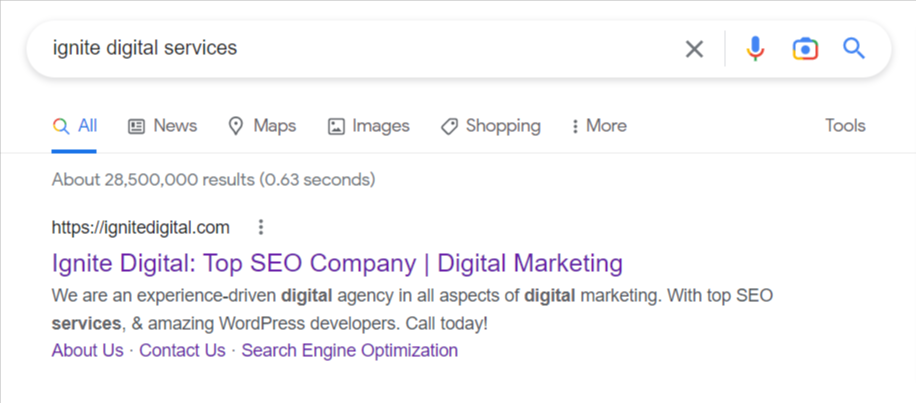What Is a Meta Description?
A meta description is a brief summary of the content that appears on a web page.
It serves as an introduction to potential visitors and search engine crawlers, giving them an idea of what they can expect when they click through to your website.
Meta descriptions are also used by social media sites like Facebook and Twitter, so it’s important to write effective ones in order to draw in readers.
Crafting effective meta descriptions can help boost your rankings and increase traffic to your site.
So how do you go about writing one?
Meta descriptions are an important part of SEO and should not be overlooked. They provide a succinct summary of the content that appears on a web page, giving potential visitors and
search engine crawlers an idea of what they can expect when they click through to your website.
A well-crafted meta description has the power to draw readers in, increase traffic to your site, and boost your rankings in search engine results pages (SERPs).
It’s also used by social media sites like Facebook and Twitter as part of their algorithm for determining which content will be shared or promoted.
Therefore, it’s essential to write effective meta descriptions if you want to drive more organic traffic and improve your visibility online.
Tips to Craft Meta Descriptions for Improved SEO
1. Use strong and descriptive language
When crafting effective meta descriptions, using strong and descriptive language that accurately reflects the page content in a concise manner is key.
It should be written in a way that clearly conveys the main points of the page without being too long or convoluted.
Additionally, it’s important to use words with higher semantic richness to help search engine crawlers
2. Avoid keyword stuffing
Keyword stuffing is a black-hat SEO technique where a web page contains an excessive amount of keywords in the text.
It involves cramming as many keywords as possible into content, with little regard for how it reads or sounds to visitors.
The goal of keyword stuffing is to manipulate search engine rankings by attempting to deceive search engines into believing that the website has more relevance and authority than it actually does.
This practice can be damaging to both your website’s reputation and its ranking in SERPs, so it should be avoided at all costs.
3. Avoid generic descriptions
When crafting effective meta descriptions, it is important to avoid generic descriptions that could be used for any page on your website.
Generic meta descriptions won’t draw in readers or boost your rankings, so they should be avoided.
Instead, try to be as specific and unique as possible when writing your meta description.
Think about how the content of the page can be expressed in a succinct and engaging way that will draw readers in.
4. Use actionable language
By using actionable language, you can make your meta description more persuasive and inspiring to potential visitors.
Actionable language should evoke a sense of urgency and encourage the reader to take some kind of action, such as visiting your website or reading more of your content.
For example, instead of saying ‘Learn about our services,’ you could say ‘Discover the unique benefits of our services today!’
This actionable language is much more likely to inspire readers and draw them in.


5. Limit meta descriptions to 160 characters
It’s important to make sure meta descriptions are limited to 160 characters or less, so as not to get truncated by search engines.
This will ensure that the reader can see your full message and take action on it if desired.
6. Leverage emotional language
Using language that speaks directly to the target audience of your webpage can be an effective way to increase readership and boost rankings.
One way to do this is by using emotional language, which can evoke certain feelings in readers and make them more likely to click.
7. Don’t forget about mobile users
Meta descriptions should be optimized to appear in both shortened and longer versions on different SERPs.
For mobile devices, meta descriptions may often be truncated due to the limited screen size.
To ensure that your meta description still conveys the main points of your page, it should include clear and concise language that accurately reflects the content in a few words
8. Incorporate relevant brand terms
Maximize your click-through rate (CTR) and promote any special deals, services, or offers you have available by integrating relevant terms from your brand into the meta descriptions of each page.
For instance, include information about free shipping or extended return policies to entice more customers.
9. Keep your meta descriptions up-to-date
If needed, it is important to modify meta descriptions regularly while remaining consistent with any updates you make on the content of that same page.
This will ensure that search engines and readers have the most accurate information about your page.
10. Run A/B tests whenever possible
By assessing the click-through rate (CTR) of different versions of your meta description over time, you can determine which version is more successful in generating organic website traffic from search engines and social media platforms.
A/B testing is a great way to measure the effectiveness of meta descriptions and ensure that yours are as effective as possible.
If properly structured, meta descriptions provide opportunities to increase website traffic and showcase how creative and engaging an author’s work can actually be.
Optimizing your meta descriptions should be an essential component of your marketing strategy.




